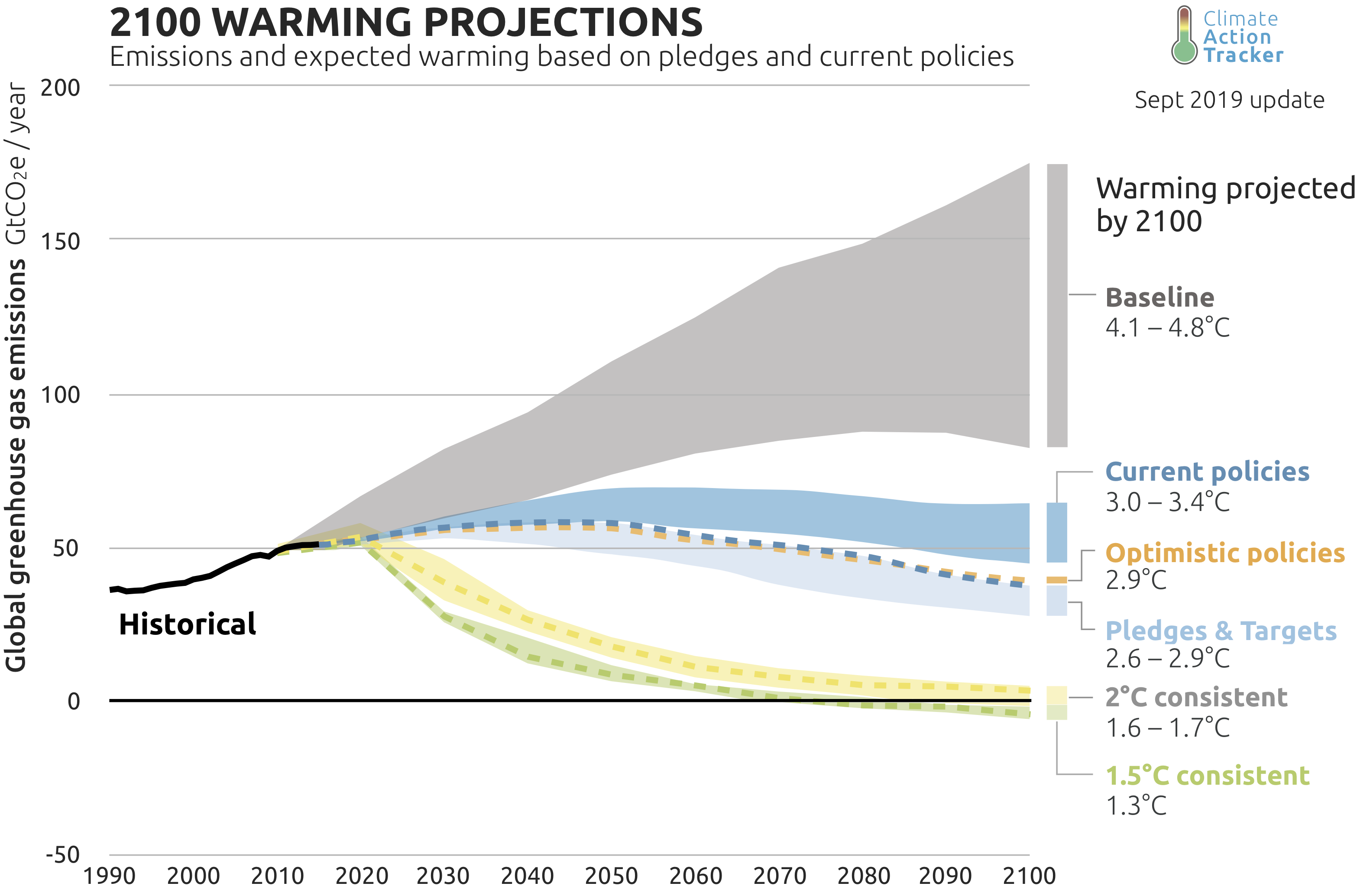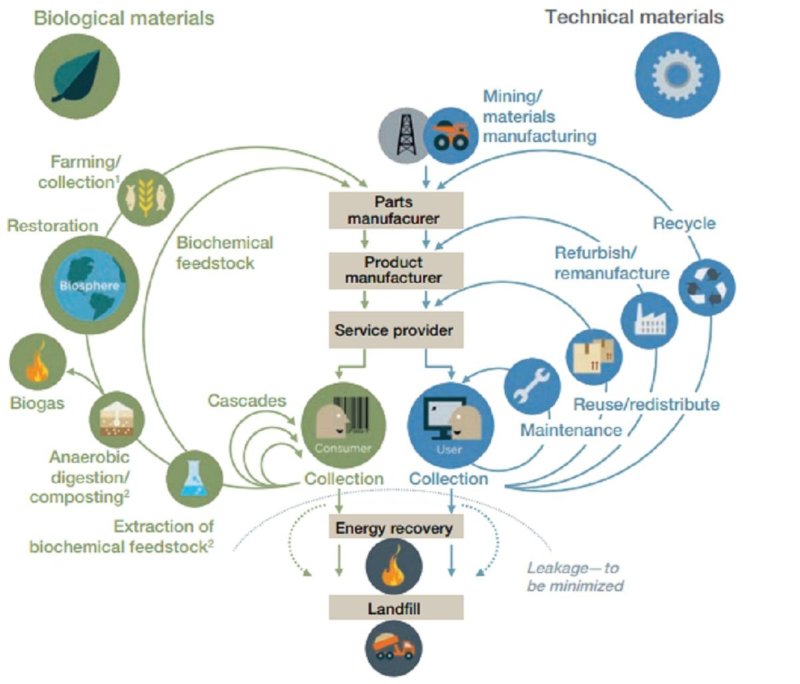Circular Economy: Why/How/What
31 October 2019
Burak İlgün
Tags : automotive industry,
Circular Economy,
Electric Vehicles,
environmental friendly,
EV Vehicles,
high tenacity PET,
Life Cycle Assessment,
nylon,
recycle,
reuse,
sustainability
The given root cause of megatrends
Industry is busy with the clarification of the future of mobility elements like autonomous cars, sharing economy and EV vehicles. Let’s take step backward and focus the main reason why we are discussing the future more than ever.
The Paris Agreement signed in December 2015 was the first time as many as 195 countries adopted a universal climate deal. The challenging target they set themselves was to keep global warming lower than 2°C. If no measures were taken, warming would reach ~4.8°C by the end of this century.1
Although the 2°C increase limitation seems tough to meet, even this precaution will not be able to prevent a 56cm increase in sea levels and may affect 800M people worldwide. The executive summary, then, is that the world is sinking. The consequences will cost ¨14 trillion USD with lots of complicated social impacts.2,3

Illustration https://climateactiontracker.org/media/images/CAT-2100WarmingProjections-2019.09.original.png
Desing thinking for global warming: circular economy
In order to achieve low emission levels globally, holistic approach is highly required. If we would like to start design thinking for emission reduction, circular economy will be the emerging answer.
According to a report published by the World Economic Forum, here is the definition: “A circular economy is an industrial system that is restorative or regenerative by intention and design. It replaces the end-of-life concept with restoration, shifts towards the use of renewable energy, eliminates the use of toxic chemicals, which impair reuse and return to the biosphere, and aims for the elimination of waste through the superior design of materials, products, systems and business models”4

Illustration: https://www.ellenmacarthurfoundation.org/circular-economy/infographic
As was declared in January 2019, the current size of the world’s circular economy is only around 9%. This means that 91% of generated economic value will become useless after its product life. Unfortunately, the world is still dominated by a linear economy, leading to the misuse of truly scarce resources.
The sophisticated circular economy requires re-cycle, re-use and re-duce of materials that are within either the production, usage or disposal phase. As soon as this approach is deployed, less usage of resources will limit emissions.
The new premium
Although the perception was previously widespread that products with a “re-“prefix were “low cost” and “low quality”, this will soon change as people see that the circular economy is vital for the future of the planet.
Surveys and events have indicated that people, especially the younger generation, regard global warming as a personal issue. This awareness will be a kind of game changer and is sure to affect consumer behaviour. The same shift in mentality may also be valid for B2B companies.
Accepting the notions of the “circular economy” and the “sharing economy” constitutes a disruptive change in mentality that can reshape the world from bottom to top. When we start to assign importance to the Life Cycle Assessment (LCA) of products, we may find that recycled or reused materials come to be positioned at the same price. Products that lead to a “reduction” in material use may even end up being classified as premium products.
Tough decisions for the future
It is obvious that any innovation should include the best practices for environmental issues at first. people are challenged by the LCA of their products. If the LCA of the new technology worse than the older technology there will be always a request to change it.
Whenever discussion turns to electric vehicles (EVs), the argument arises that a non-renewable source of electricity is of limited use in preventing global warming. EVs reduce carbon emissions significantly, but they do not represent a perfect solution yet.
This is why hydrogen power has been the hot topic of the automotive industry for the last 3 years. 5
Due to the current limitations, hydrogen power does have its drawbacks, but the expectations for the upcoming years are all positive, and it is predicted that a switch to hydrogen fuel cell EVs will occur. In this way, automakers will be able to come close to their carbon-neutral targets.
Having said this, since the “future of mobility” is becoming an ever more complex notion, shaped by constantly increasing factors, it is becoming ever harder to solve this equation. Innovating within the framework of the circular economy calls for open collaboration practices which will make it easier to deliver solutions.
Reinforcement solutions for the circular economy
Today’s tires need to possess a range of features: to facilitate shared mobility, be suitable for cars with heavier chassis, possess superior durability and require minimal maintenance. Kordsa offers new products that can reduce the reinforcement usage in tires (high modulus nylon, high tenacity PET) or prolong tire life (high adhesion retention), while abiding by the principles of the circular economy. These solutions are increasing the flexibility of car designs for the future that make use of various powertrain applications.
End of life tire are still in the linear economy phase which is a common problem for stakeholders. Although there is not a proven feasible solution for recovery of textiles from ELT, with open collaboration and acceleration of circular economy eco system, let’s be positive that there may several solutions may come true...
Bibliography
1-https://interactive.carbonbrief.org/impacts-climate-change-one-point-five-degrees-two-degrees/#
2-https://www.weforum.org/agenda/2019/01/the-world-s-coastal-cities-are-going-under-here-is-how-some-are-fighting-back/
3-https://www.newsweek.com/rising-seas-could-cost-world-14-trillion-year-2100-1006823
4-http://reports.weforum.org/toward-the-circular-economy-accelerating-the-scale-up-across-global-supply-chains/from-linear-to-circular-accelerating-a-proven-concept/#view/fn-11
5-https://home.kpmg/content/dam/kpmg/uk/pdf/2019/01/global-automotive-executive-survey-2019.pdf
Tags : automotive industry,
Circular Economy,
Electric Vehicles,
environmental friendly,
EV Vehicles,
high tenacity PET,
Life Cycle Assessment,
nylon,
recycle,
reuse,
sustainability